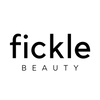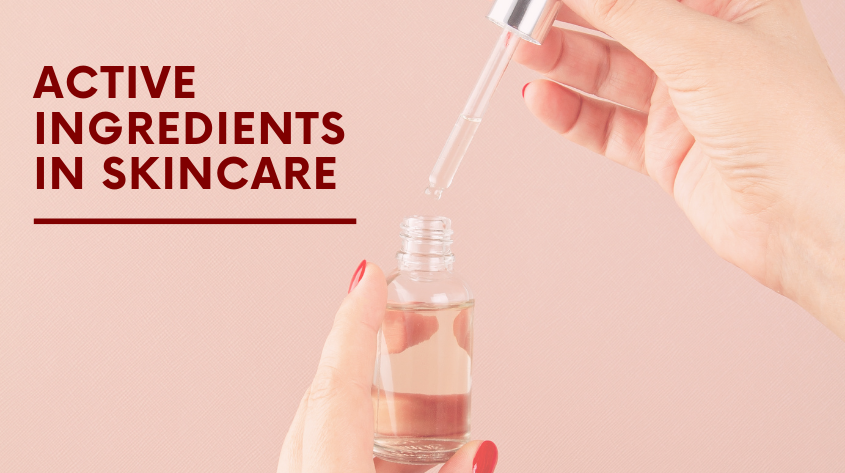On the packaging of your skincare product, you will usually find a string of long words and foreign sounding names, and all you want is for it to work. It is worth having a grasp on what the main ingredients do and what the product may be able to achieve for your skin before you buy so you don’t waste your effort and money. It is especially important to pay attention to:
- the active ingredient
- the concentration of the active ingredient
- any inactive ingredients you might be allergic or sensitive to
- the way claims are worded on the packaging

What are actives?
An active is the ingredient in a product addressing whatever skin concern it's meant to target. If you're getting a cleanser that is claimed to treat acne, the active ingredient is what actually treats the acne, possibly something like salicylic acid. Much research has been conducted on these active ingredients to prove that they are effective at treating the various skin concerns.
These are the most common types of topical actives you'll come across that address specific skin issues:
- Signs of aging: SPF-boosting ingredients (e.g. zinc oxide, titanium dioxide, avobenzone, oxybenzone), vitamin A/retinoids, vitamin C, vitamin E.
- Dryness: hyaluronic acid, vitamin E.
- Pigmentation issues: kojic acid, AHAs, BHA, hydroquinone, vitamin C.
- Acne: vitamin A/retinoids, salicylic acid, benzoyl peroxide, azelaic acid.
- Rosacea: various antibiotics, azelaic acid, sulfur.
- Psoriasis: steroids, vitamin A/retinoids, vitamin D, salicylic acid, urea, lactic acid, anthralin, tacrolimus, pimecrolimus.
- Eczema: steroids, tacrolimus, pimecrolimus.
Let us look at a few active ingredients which help to treat common skin concerns.

BHAs are chemical exfoliators that soften and dissolve keratin, a protein that forms part of the skin structure. This helps to loosen dead skin cells, so they are easily sloughed off.
BHAs also work inside the pores, where they not only dissolve keratin plugs, but also help to regulate keratinization (cell turnover and shedding).
Salicylic acid is the most common type of BHA. It is derived from willow bark.
It is well-known as an acne treatment - used to fight bacteria, treat calluses and other areas of dry skin - but it can also help calm down general redness and inflammation.

PYUNKANG YUL Acne Toner

Formulated with Willow Bark Extract, it gently exfoliates and rid skin of dead cells. It helps in unclogging pores and targeting the most stubborn pimples caused by bacteria and dead skin for a smoother, healthier-looking complexion. It is packed with Tiger Lily extract to provide anti-bacterial properties and to flush out acne-bacteria from clogged pores. The formula is further enriched with Madecassoside and Niacinamide to soothe and regenerate the skin. The toner also controls excess sebum production to prevent breakouts.

COS DE BAHA Salicylic Acid 2% Liquid

Using an exfoliating toner every alternate night is useful for preventing breakouts and to slough away the dead skin cells on the surface of your skin. This treatment exfoliates deep inside the walls of pores to fight acne, oily skin, and blemishes. It promotes smoother skin texture and visible clarity with regular use.

COS DE BAHA BHA Salicylic Acid 4% Exfoliant Serum
As the Salicylic Acid in this serum is in a high concentration of 4%, we do not recommend it if you are new to Salicylic Acid. It is recommended to be used as a spot treatment on problem areas. Be careful to not over-exfoliate and sensitize your skin!
- help fade pigmentation
- helps fade hyperpigmentation
- impede melanin production
- reducing overall redness
- tied to skin elasticity
- protects against sun damage


AHAs may help with fine lines and wrinkles, irregular pigmentation and age spots, and may help shrink enlarged pores. Side effects of alpha-hydroxy acids include mild irritation and sun sensitivity. To avoid burning, sunscreen should be applied in the morning. To help avoid skin irritation, start with a product with a maximum concentration of 10% to 15% AHA. To allow your skin to get used to alpha-hydroxy acids, you should only initially apply the skin care product every other day, gradually working up to daily application.

BFFECT AHA 10% + LHA 0.5% SERUM

This product is a medium concentration acid serum, mainly used to exfoliate, gently activate the skin and fight acne.
- gets rid of blackheads and whiteheads
- reduces acne and clogged pores
- lifts dead skin cells off the surface of the skin
- speeds up cell turnover and stimulates collagen production
- lightens dark spots and post acne marks
- helps brighten overall skin tone

These have similar effects to alpha-hydroxy acids but are less likely to cause stinging or burning, so they may be a better option for those with sensitive skin.

KLAVUU Green Pearlsation PHA Calming Toner

- Exfoliating toner that gently removes dead skin cells and waste.
- Hypoallergenic exfoliation effect from PHA and marine green plants
- A toner that relieves sensitivity and damage caused by the external environment
- Tea tree extract and centella extract soothes your skin

BENTON PHA Peeling Toner

Benton PHA Peeling Toner contains PHA, a third generation peeling ingredient and Natural Moisturizing Factor. This toner helps to smooth and hydrate your skin promoting gentle exfoliation.
3rd Generation PHA which makes up for the weaknesses of AHA
Not only does PHA clear dead skin cells, it is also great for hydrating the skin as it forms a protective barrier which prevents moisture from escaping. PHA has similar functions with AHA and BHA which melt dead skin cells and help with concerns of skin's oiliness, whiteheads and blackheads. PHA is a famous exfoliating ingredient often used in aesthetics for moisture glow peeling. These ingredients help prevent oxidization of the product and also help moisture infiltrate into the skin.

Retinol is derived from vitamin A which has a molecular structure that's tiny enough to get into the lower layers of skin, where it finds collagen and elastin. Retinol is proven to improve mottled pigmentation, fine lines and wrinkles, skin texture, skin tone and color, and your skin's hydration levels. Retinyl palmitate is another ingredient related to retinol, but is less potent.
Granactive Retinoid is a next-generation anti-aging product delivering the performance of retinol and retinoid derivatives with significantly lower irritation potential, thus supporting clear, visibly more youthful looking skin with better consumer acceptance.

BFFECT Granactive Retinoid Emulsion 2% + GABA
A new member of the retinoid family and a next-generation anti-aging active for cosmetics. This FDA-approved ingredient works similar to retinoic acid, the metabolite of retinol, but without its irritation. It helps skin renewal, reduces surface roughness and age spots, and prevents skin scaling.
A Non-Irritant Anti-Aging Formula with Granactive Retinoid
Targets:
- wrinkles
- age spots
- roughness
- scaling skin

When you first introduce actives in your routine, you might face something called skin purging. Skin purging’ refers to a reaction to an active ingredient that is increasing skin cell turnover rate. As skin cell turnover speeds up, the skin starts shedding dead skin cells faster than normal. Before these new, healthy cells can cycle to the surface, some other stuff has to rise to the top first, like the excess sebum, flakes, and build-up that clog pores. Having dry and peeling skin is also common. To learn more, read our blog post here to learn more about retinol/ retinoids.
The end goal? To expose the fresh skin cells underneath and reveal clearer, younger-looking skin.
Since purging occurs when an ingredient attempts to speed up the skin’s natural pace of shedding and renewal, it should only take one full skin cycle to get through the worst of it.

Everyone’s skin is unique, so that time frame can differ from person to person. Purging will start to subside after 2 weeks of starting a new skin care routine. “Your Skin Will Get Worse Before It Gets Better”. It can be tempting to stop using the active ingredient completely but be patient and you will see the results. If it lasts longer than 2 weeks, you should consider switching out that particular active ingredient and look for other alternatives.
Something to also note is that you should always start with a basic routine –a low pH cleanser, moisturizer and sunblock – and build on from there. Try to introduce actives in your routine one active at a time, do not layer your actives as some actives do not react well together. Adding them one at a time also allows you to keep track of how your skin reacts to that specific active ingredient so you know if you should continue using it or swap it out.
For more help on finding the ideal skin type for your skin, feel free to drop us a WhatsApp message to get a customized skincare routine at +65 87272171.
For Facials, book an appointment online at
https://vcita.com/ficklebeauty


Leave a comment